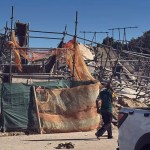SPONSORED CONTENT
How insurers are navigating climate change

Weather-related claims have increased tenfold over the last decade. And it is likely to get worse, with catastrophe (CAT) claims continuing to increase in severity and frequency.
Since 1982, the frequency of large CAT claims has increased from 6 to 36 per decade, with the cost of US natural disasters totaling over R102 billion in the last three years. Our data shows that between 2000 and 2011, the average annual CAT claims cost R39 million, compared with the last decade of 2012 to 2022, where the average annual CAT claims totaled R371 million.
Reinsurers have been subjected to significant losses stemming from South African insured events. Over the last three years, reinsurance claims have exceeded R80 billion. Events like riots and weather-related disasters are making it difficult for reinsurers to provide the cover insurers want, which is putting pressure on insurers’ input costs. Reinsurance plays an interconnected role in the insurance market. Global disasters and loss events like floods in Europe or wildfires in Greece and Canada impact reinsurance pricing in South Africa.
In responding to climate risk, we believe the sweet spot is a strategy that tackles two types of risks: physical and transitional. This may involve a coordinated and detailed approach in areas like product innovation, forward-looking analytics, and technical-based partnerships to drive resilience and action.
Data-modelling
It is the insurer’s task to look for trends in climate risks and determine how to adjust models to try and reflect the change in risk due to climate change. How these adjustments are done varies depending on the risks in line with the trends in climate data sets.
Old Mutual Insure is taking data from satellites and linking it with our experience, so we can better understand the impact of events on insurance, and in so doing, respond innovatively. Questions we are concerned with include ‘can we modify CAT models to take climate change into account’, and ‘can we link climate data to our traditional pricing to quantify the effect of climate change’? We do this through CAT modelling, which helps us anticipate the likelihood and severity of potential future catastrophes to adequately prepare for their financial impact, and include risks like hurricane, flood, earthquakes, hail, wildfires, and storms.
We are also concerned with the long-term financial risks associated with climate change in our data modelling. For example, there could be changes in variability and extremes, such as rainfall patterns, which make it difficult to predict in the future. We try to understand how long-term changes and trends in average conditions will impact insurers. Already we have seen parts in the UK experience a heatwave in the summer, which means the ground dries out and insurers then get claims for houses that are either sinking or cracking (I.e. subsidence claims).
It is important to stress-test CAT models with different scenarios, or by incorporating probabilistic climate model output. For example, could Indian Ocean cyclone patterns shift south more towards South Africa? Hazards and frequency of risks in CAT models associated with cyclones must be adjusted to reflect the increased severity and frequency of the events, while basing these adjustments on cutting edge science.
In understanding precipitation datasets, we try to connect the claims we have had due to rain to our portfolio, and how to proactively mitigate the risk. Having said that, it is also likely that in the future insurers will want to understand what a policyholder’s personal approach is to weather climate change risk management. For example, has the policyholder installed French drains to protect a property?
Takeouts
Climate change will likely be a source of increased short term insurance claims into the future, which is why insurers need to invest into understanding current and future causes of risk to policyholders. This will need to be coupled with the latest technology to understand risks, and solutions must protect clients from volatility during times of change. DM/BM
By: Ronald Richman, Chief Actuary at Old Mutual Insure















